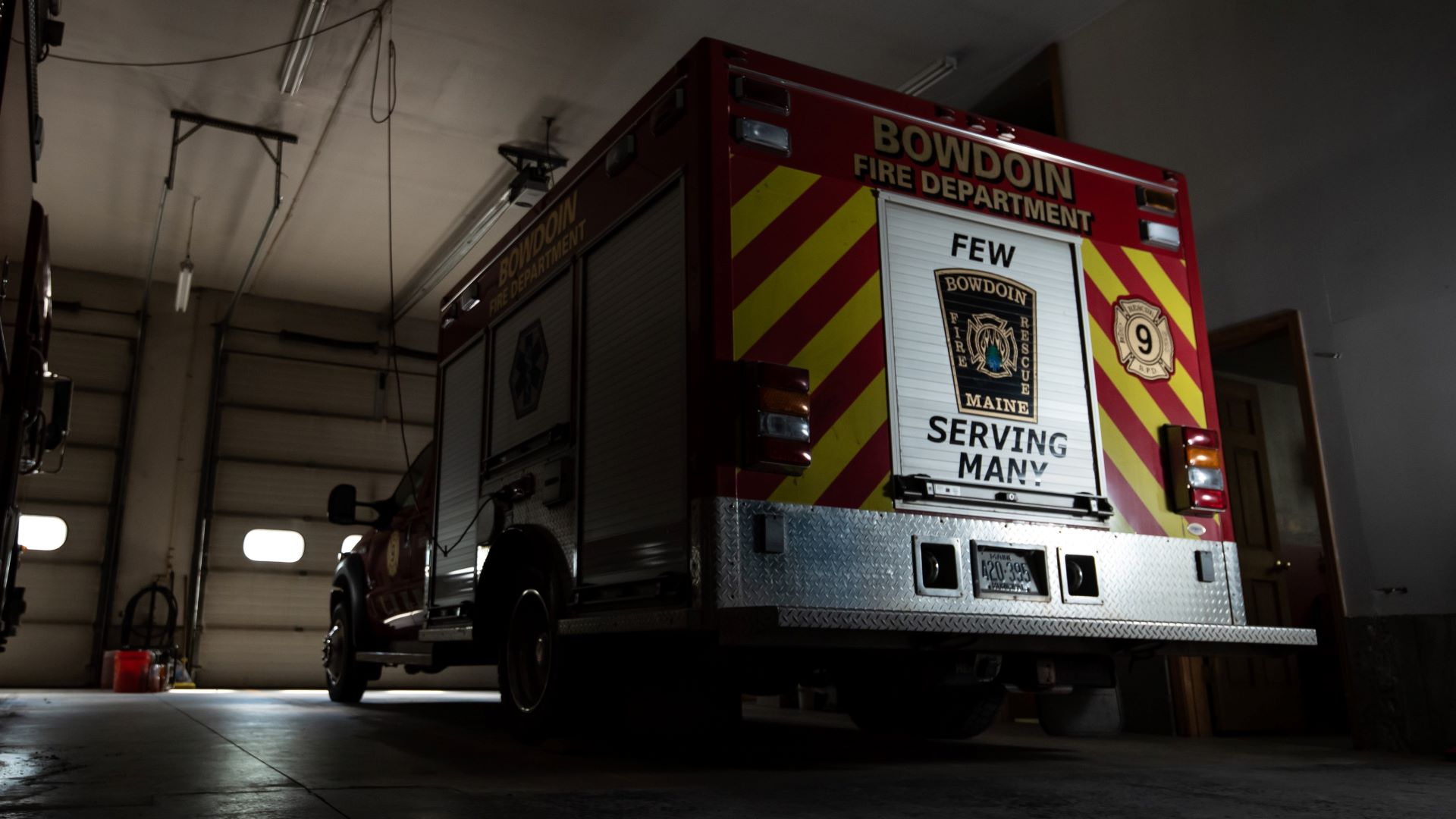Low wages, a lack of work-life balance and burnout are among factors driving emergency medical services personnel around the country to quit ambulance duty.
Last year, the turnover rate for full-time emergency medical technicians, known as EMTs, was 36% and for full-time paramedics, it was 27%, according to an American Ambulance Association survey. The turnover rate includes both resignations and firings, but nearly all of the EMTs and paramedics who left did so voluntarily. More than one-third of new hires don’t last through their first year, the survey found.
A federal study projected a need for 40,000 more full-time emergency medical personnel from 2016 to 2030.
“The public doesn’t see where there’s no one in the station, and volunteer services are trying to muster a crew,” said Dia Gainor, executive director of the National Association of State EMS Officials and former director of the Idaho EMS office for 19 years.
When people call 911 to report a crisis — be it a car crash, drowning, shooting, difficulty breathing, heart attack, fall, stroke or drug overdose — emergency medical clinicians often are first on the scene to treat and transport the patient to the hospital. Agencies also transfer patients between hospitals.
To stave off longer 911 call wait times and the closure of ambulance services, many states are rethinking how they recruit and retain both paid and volunteer EMS workers. Nearly 40 state legislatures and Washington, D.C., considered bills in 2022 related to various aspects of emergency medical services, according to the National Conference of State Legislatures.
RELATED: Washington County emergency medical system approaches a crisis
One idea is to expand the EMS workforce pool by age. As states felt the workforce pinch and began looking for younger clinicians, the National Registry of Emergency Medical Technicians, which tests and certifies EMTs, in 2019 eliminated any age requirement for certification. It had been 18.
At least six states have lowered the minimum age for EMT training to 16 or 17, according to NCSL. New Jersey, for example, allows 16-year-olds to enroll in training with parental consent. Indiana passed a law last year to allow retired emergency service personnel and some students to qualify for temporary licenses.
Louisiana is among states that offer EMS training classes in high schools. The Jump Start program started in 2015 and, by 2019, had led to the state licensing of 2,000 emergency medical responders, who have completed the first level of training and can provide immediate life-saving care until EMTs arrive on the scene. The program has also trained dozens of licensed EMTs, who can drive and care for patients in the ambulance, according to a report by the Louisiana Bureau of EMS.
“I’ve always liked medical stuff,” said Trentin Monk of Elizabeth, Louisiana, 16, who said his dream job is to become a flight paramedic, or a paramedic who works in an air ambulance. Last year at age 15 and as a sophomore in high school, he became the youngest certified EMT ever in Louisiana.
After Monk was certified nationally and had two rides in the ambulance, though, the fire department said he was too young to ride because of insurance rules. He volunteered for a few months longer but quit when he got tired of sitting around and not going on calls. He’s still glad he took the classes and the exam.
“It’s a good thing to put on my resume,” he said, adding he plans to return to EMT duties when he turns 18.
Most metropolitan EMS agencies in Louisiana choose not to hire employees under the age of 21 for insurance purposes, but many rural EMS agencies and fire departments will hire people over the age of 18, according to the state EMS report, which said applicants who already have a state license have an advantage in the hiring process.
Kelly Grayson, a critical care paramedic and owner of the consulting business MEDIC Training Solutions, was Monk’s EMT teacher.
“Getting high school kids into the training program hasn’t alleviated the shortage, but it’s a start,” Grayson said, adding it can be better than trying to recruit people already in the workforce. “The idea is to start them young and keep them in EMS for a longer period of time.”
Licensed by the states, EMTs and paramedics work full- or part-time or volunteer in city or county rescue squads and fire stations, separate EMS stations and private ambulance companies, as well as in hospitals and clinics. The biggest difference between EMTs and paramedics is their training and scope of work.
An EMT needs no previous medical background before training, but to become a paramedic, one needs to be an EMT before training.
Bruce Evans, then-president of the National Association of Emergency Medical Technicians, told a congressional panel last February the association’s EMT and paramedic members respond to nearly 28.5 million emergency calls each year.
“Currently, our nation’s EMS system is facing a crippling workforce shortage, a long-term problem that has been building for more than a decade but made significantly worse by the pandemic. Most communities are facing crisis-level shortages of EMS personnel and many communities have been impacted by agency closures,” Evans testified at a Senate subcommittee hearing on health care workforce shortages.
RELATED: Washington County emergency responders work to avoid financial crisis
While workers in other fields have been able to work from home during the coronavirus pandemic, EMTs and paramedics continued to respond to 911 calls and go into people’s homes during early days, before vaccines were available or scientists fully understood how COVID-19 spread. Some clinicians quit because they were afraid of bringing the virus home to their family members; others couldn’t keep up with the additional hours required to take up the slack, officials said.
The ambulance workforce shortage comes even though more EMS clinicians are being certified nationwide. There were 456,366 certified EMS workers in 2021, an increase of 5% and 20,200 people from the year before, according to the National Registry of Emergency Medical Technicians.
“Like all health care, there is a workforce shortage, but with emergency medical services, it’s also a placement, a distribution problem,” Susan Bailey, current president of the National Association of Emergency Medical Technicians and director of the Louisiana Bureau of Emergency Medical Services, said in an interview.
“Since COVID-19, hospitals have found value in EMTs and paramedics, and they’ve started hiring them at competitive salaries,” she said. “It takes them out of the ambulance and into the hospital.”
Ambulance agencies can’t pay more because the federal reimbursement rate for ambulance services has not kept pace with the costs, she said. The Center for Medicare and Medicaid Services is evaluating a pilot program with a new fee payment model that could lead to changes in the ambulance reimbursement structure.
RELATED: Moosabec ambulance service chief says more funding is ‘critical’
Pay and benefits were a top concern of EMS workers who responded to the EMT association’s 2022 workforce satisfaction study, but the inability to balance work demands with family responsibilities edged out pay as the primary reason people said they were leaving their jobs. More than half of the respondents said they worked two or more jobs to make ends meet.
Two of five EMTs said they made less than $15 an hour; about half the paramedics, who have more training, made $21 to $30 an hour, the workforce satisfaction study reported.
Workforce challenges are particularly acute in rural areas that rely on volunteers to respond to 911 ambulance calls.
Jules Scadden, a paramedic for 30 years, is director of emergency medical services at Dysart Ambulance Service in central Iowa. Dysart is a city of 1,379 people about 20 miles south of Waterloo, where the nearest hospitals are.
Dysart’s two ambulances cover a service area of 150 square miles and run about 200 calls a year. The service had about 24 workers on the roster pre-pandemic and now is down to 20. Except for Scadden and two other employees, the rest are volunteers.
“I’m fortunate because even with a small roster, we’re able to keep the ambulance staffed 24/7,” she said. Time was when volunteers could show up for calls as they were available; now volunteers are scheduled. At one time, local schools allowed staff to leave school to take ambulance calls, but that’s no longer the case.
If it’s hard to keep volunteers, it’s as difficult to hire paid staff, she said.
“In my little, small rural area, we cannot afford to pay what bigger cities can pay. New people want the big city; they want the call volumes.”
However, Texas found that in the first eight months of 2021, only 27% of state-licensed emergency medical services personnel submitted a patient care record, which is required for patients who receive care in an ambulance. That means more than 70% of licensed EMS professionals were not working in ambulances, said the Texas EMS Alliance, which represents EMS agencies in the state, citing Texas Department of State Health Services data.
Texas Gov. Greg Abbott, a Republican, signed a $21.7 million measure in November 2021 funded by federal COVID-19 relief funds to expand awareness of EMS careers, provide tuition scholarships for EMS training and ramp up other recruitment and retention efforts.
States also are studying how to maintain EMS systems. A commission in Maine issued a 51-page report in December that recommends the state spend $70 million annually for five years to avert an emergency medical crisis that stems in part from a lack of volunteers.
The Colorado legislature, noting that some Coloradans “no longer have access to a Colorado-based emergency medical services system, and other Colorado communities are at risk of losing” theirs, set up a task force to study long-term EMS sustainability.
In New Hampshire, Democratic state Sen. Suzanne Prentiss, a paramedic, suggested to state Commissioner of Safety Robert Quinn that he convene an ad-hoc committee to study EMS workforce and other issues, and he did.
Among the committee’s dozens of recommendations: End New Hampshire’s requirement that EMS workers be U.S. citizens, develop a plan to recruit people of more diversity in race, ethnicity and gender and develop a more active social presence.
“Be more inclusive — that’s what we need to do,” Prentiss said in an interview. “Entire groups of people just don’t see themselves in these roles and don’t know how to get into the profession. We can do better in New Hampshire.”
Sign up here to receive The Maine Monitor’s free newsletter, Downeast Monitor, that focuses on Washington County news. This story was originally published by Stateline, an initiative of The Pew Charitable Trusts.







